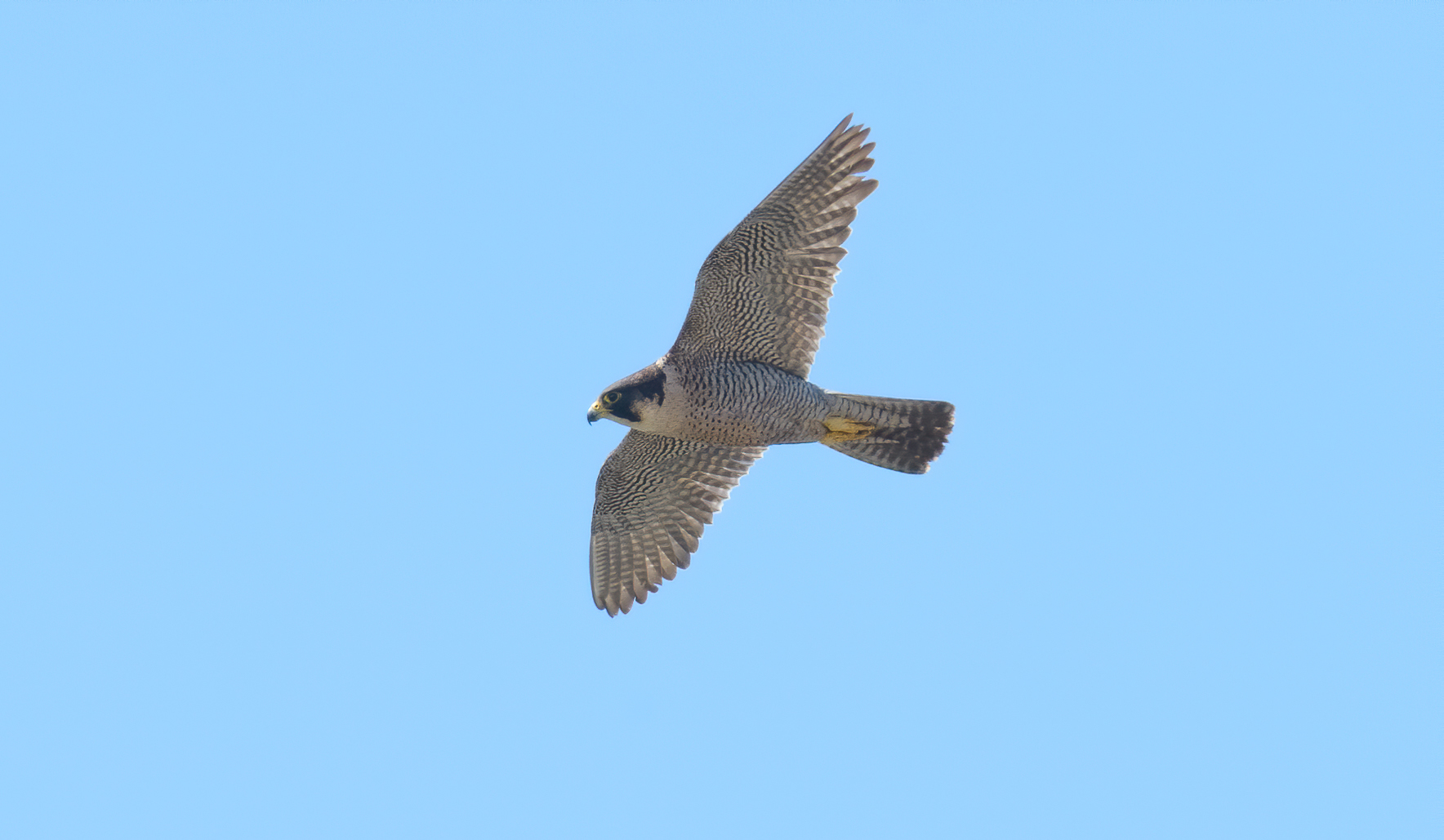Last Tuesday we went out, armed again with binoculars and mask, for another inter nos walk focused on the Naples’ biodiversity.
Starting from Via Cilea, we decided to walk to the Virgiliano Park, one of the places we most visit with our trekking and urban birdwatching activities, for a journey of about 13 km.
The journey gave us the opportunity to investigate the many green areas that line the roads that connect Vomero with Posillipo, certainly not very popular among bird watchers but with great naturalistic value.

Although the day seems favorable for migratory birds, with not particularly intense wind from south, during the morning we did not register an exciting number of them nontheless we still managed to return home with a checklist of 33 species!
As soon as we left, at the beginning of the walk we immediately add Short-toed Treecreeper (Certhia brachydactyla) and Winter Wren (Troglodytes troglodytes) to the checklist, two passerines linked to the wooded environment.
Continuing on the road, with the urban and uncultivated vegetable gardens that extend along the escarpment overlooking the neighborhood of Fuorigrotta, we observe Alpine Swift (Tachymarptis melba), Barn Swallow (Hirundo rustica), Tree Sparrow (Passer montanus) and Spotted Flycatcher (Muscicapa striata).
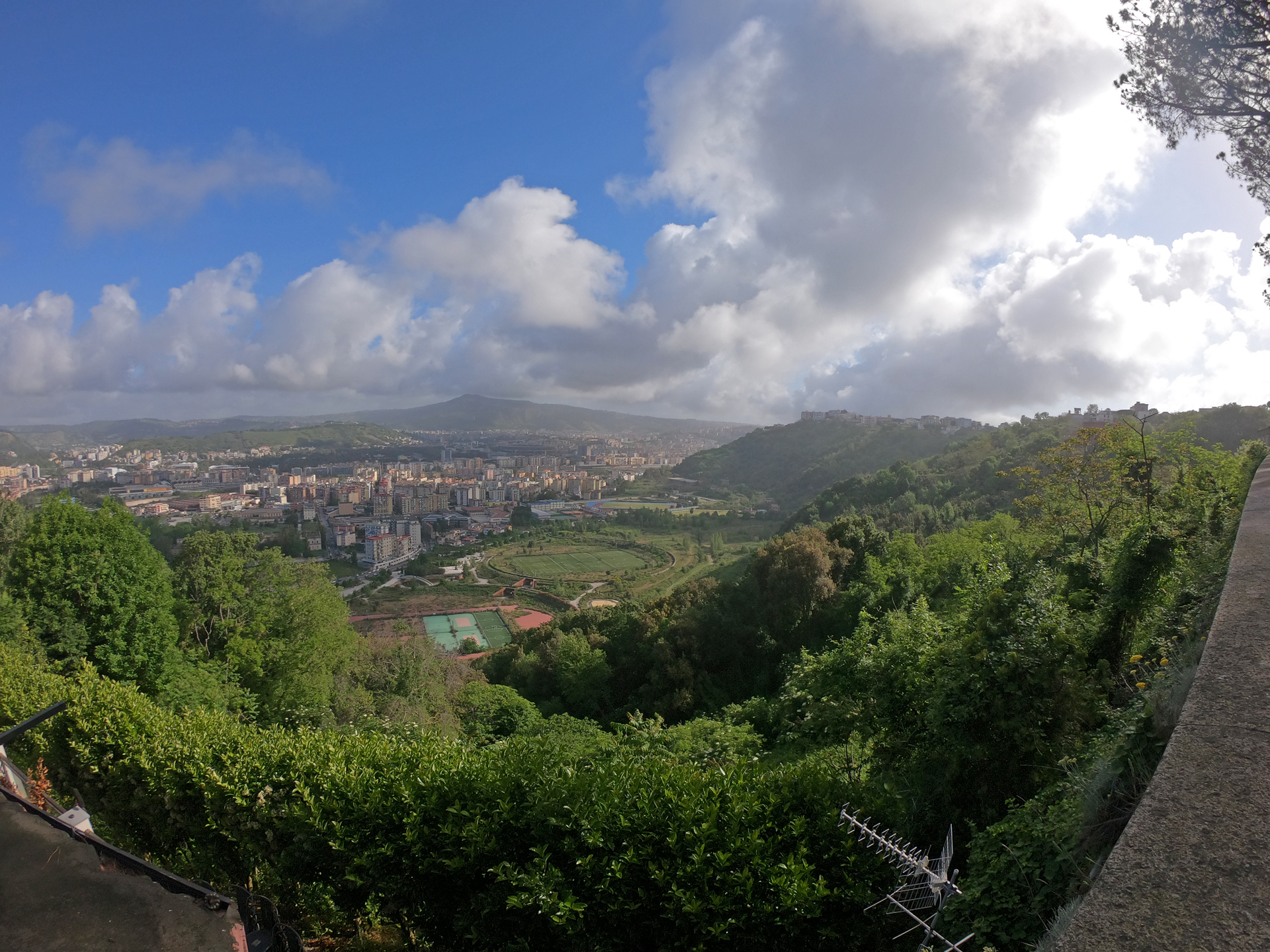
It is when we reach Viale Virgilio that the situation becomes more exciting: we are welcomed by a flock of about 15 European Bee-eaters (Merops apiaster) and, watching on the ex-Italsider, we spot 2 Eurasian Coots (Fulica atra) and a Common Moorhen (Gallinula chloropus) among the ponds inside the former industrial area. In fact, despite the notorious “scars” left by the anthropic action, this area manages to host a large number of species.

At the entrance of the Virgiliano Park we meet the birdwatcher and photographer Marco D’Errico, with whom we will spend the morning. Inside, unfortunately, our attention to the songs is disturbed by the maintenance works among the avenues that make us desist from investigating the innermost part of the park.
We therefore decide to focus on the panoramic area, very interesting for the presence of shrubland, garrigue and cliffs overlooking the sea.
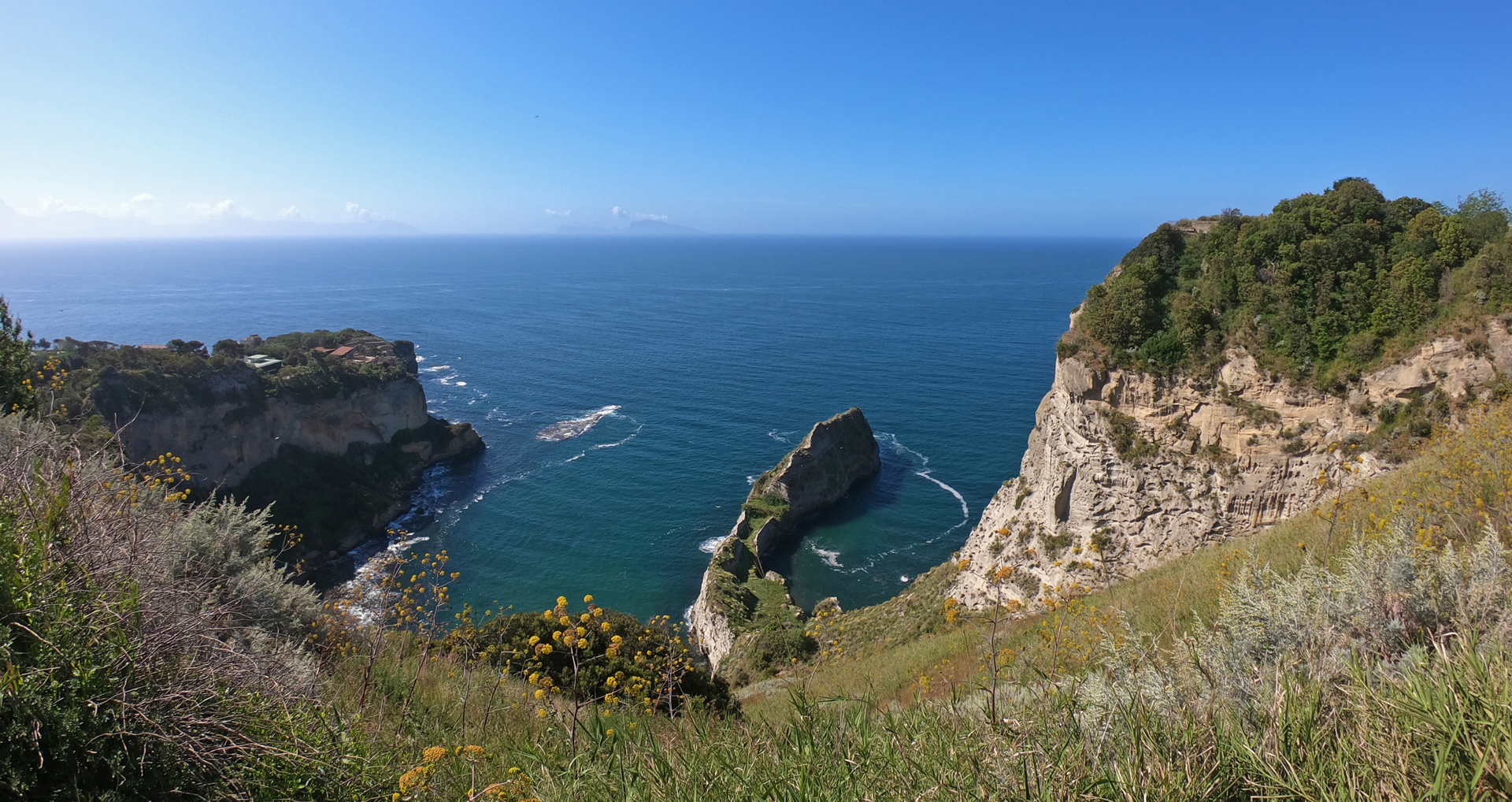
Among the bushes and shrubs we are able to contact Sardinian Warbler (Sylvia melanocephala), at least 5 Subalpine Warblers (Sylvia cantillans) and an individual of Cetti’s Warbler (Cettia cetti).
Continuing along the stretch of coast, we observe two species that use tufaceous ridges as a nesting site: the Blue Rock Trush (Monticola solitarius) and the Peregrine Falcon (Falco peregrinus), photographed by Marco D’Errico.
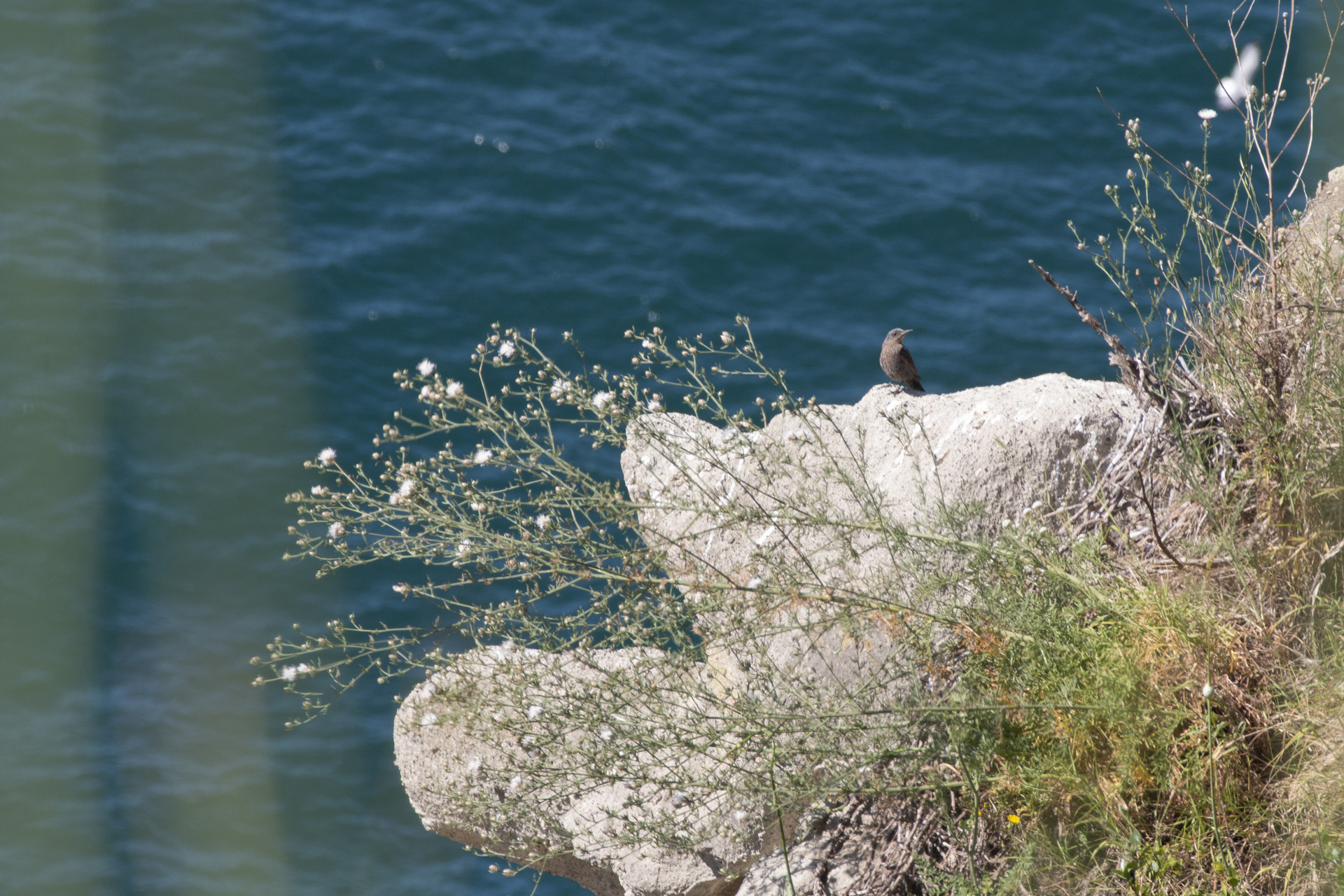

Furthermore, among the many Italian Wall Lizards (Podarcis siculus) intent on basking – thermoregulating in the sun – we photograph an adult of Moorish Gecko (Tarentola mauritanica). This, contrary to is commonly thought, is quite active even during the daytime.

It is now 11:30 and the Park is starting to be crowded, it is time to end our visit and to walk the long road that will take us back to the Vomero’s hill. Going up we complete our list with the last three species of the day: Common Kestrel (Falco tinnunculus), Great Spotted Woodpecker (Dendrocopos major) and Common House Martin (Delichon urbicum).
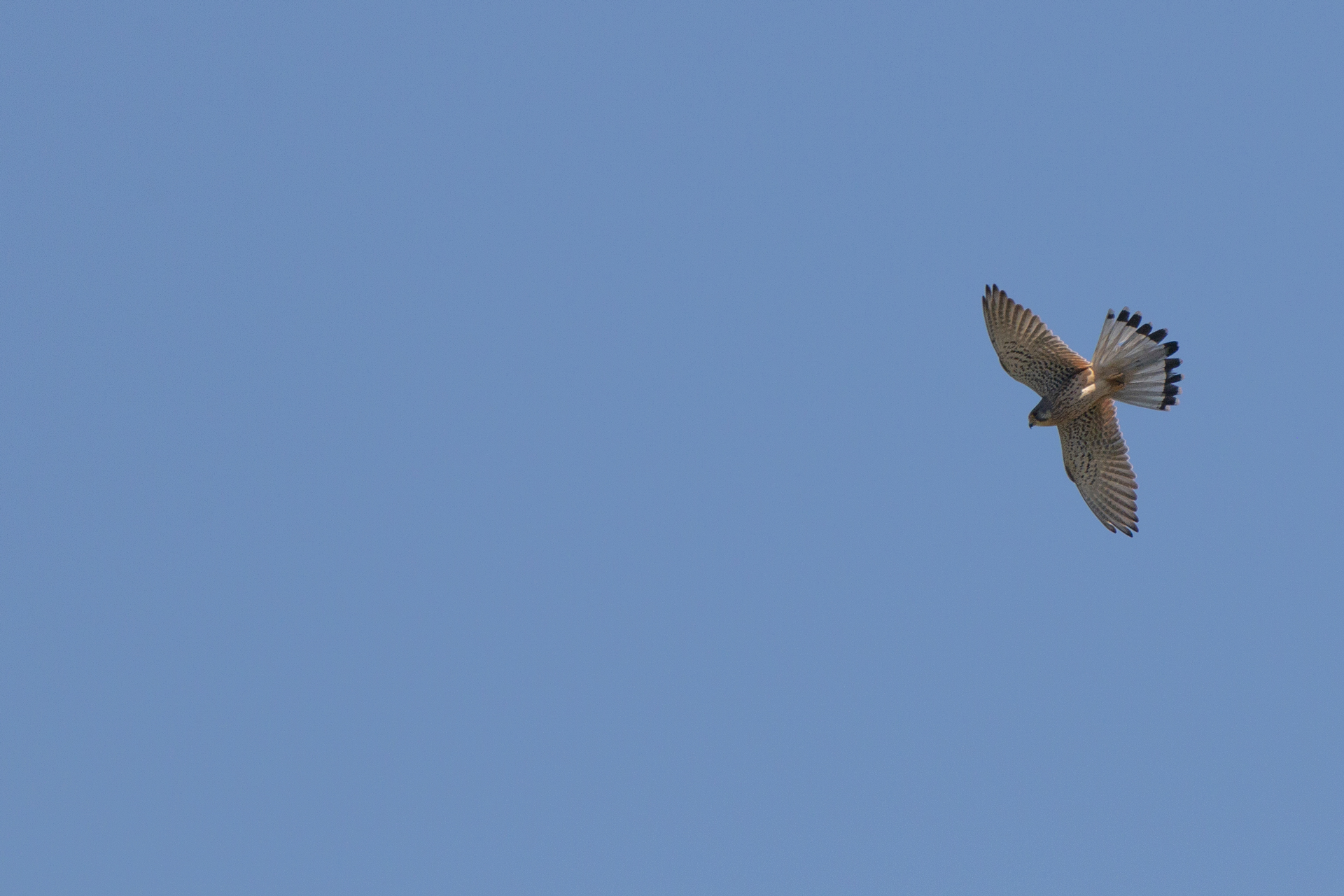
Our urban trekking will start again in June and we can’t wait to get back to guide you in the discovery of the Virgiliano Park and its surroundings!

CHECKLIST
- Common Kestrel (Falco tinnunculus)
- Peregrine Falcon (Falco peregrinus)
- Common Moorhen (Gallinula chloropus)
- Eurasian Coot (Fulica atra)
- Yellow-legged Gull (Larus michahellis)
- Feral Pigeon (Columba livia var. domestica)
- Wood Pigeon (Columba palumbus)
- Eurasian Collared Dove (Streptopelia decaocto)
- Common Swift (Apus apus)
- Alpine Swift (Tachymarptis melba)
- European Bee-eater (Merops apiaster)
- Great Spotted Woodpecker (Dendrocopos major)
- Barn Swallow (Hirundo rustica)
- Common House Martin (Delichon urbicum)
- White Wagtail (Motacilla alba)
- Common Blackbird (Turdus merula)
- Blue Rock Thrush (Monticola solitarius)
- Blackcap (Sylvia atricapilla)
- Sardinian Warbler (Sylvia melanocephala)
- Subalpine Warbler (Sylvia cantillans)
- Cetti’s Warbler (Cettia cetti)
- Winter Wren (Troglodytes troglodytes)
- Spotted Flycatcher (Muscicapa striata)
- Great Tit (Parus major)
- European Blue Tit (Cyanistes caeruleus)
- Short-toed Treecreeper (Certhia brachydactyla)
- Common Magpie (Pica pica)
- Western Jackdaw (Corvus monedula)
- Hooded Crow (Corvus cornix)
- Italian Sparrow (Passer italiae)
- Tree Sparrow (Passer montanus)
- European Goldfinch (Carduelus carduelis)
- European Serin (Serinus serinus)
